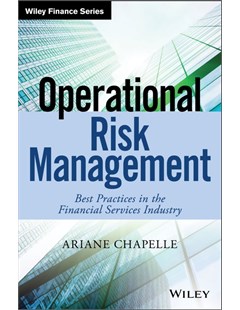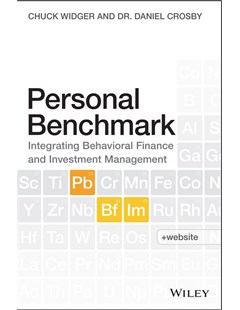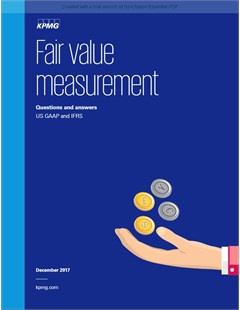Operational risk management best practices in the financial services industry
Operational Risk Management provides a comprehensive guide that includes a review of the most up-to-date and effective operational risk management practices in the financial services industry. The book provides an essential overview of current methods and best practices applied in financial firms, and also contains cutting-edge tools and techniques developed by financial firms. The most mature company in this field.
2019
Operational Risk Management provides a comprehensive guide that includes a review of the most up-to-date and effective operational risk management practices in the financial services industry. The book provides an essential overview of current methods and best practices applied in financial firms, and also contains cutting-edge tools and techniques developed by financial firms. The most mature company in this field.
The author explores the range of operational risks such as information security, fraud or reputational damage and details how to put in place an effective program based on four key risk management activities: risk identification risk assessment, risk mitigation, and risk monitoring. The book also looks at some specific types of operational risk that rank high in many companies' risk registers.
Drawing on the author's extensive experience working with and consulting for financial firms, Operational Risk Management is written both for those new to the field and for operational risk managers. Experienced workers want to consolidate and consolidate their knowledge.
This book provides an excellent breakdown of the key aspects of managing operational risk applicable for both large and small financial organisations.
It provides a far more practical guide to operational risk management than other literature in this space, particularly in the way in which it describes framework fundamentals and offers interesting discussion points in regards to some of the key topical risks.
The contents of the book include:
PART ONE: Risk identification 1
+ CHAPTER 1: Risk Identification Tools 3
+ CHAPTER 2: Scenario Identification Process
+ CHAPTER 3: Risk definition and classification
+ CHAPTER 4: Connecting Risks and Risk Networks
PART SECOND: Risk Assessment
+ CHAPTER 5: Risk appetite
+ CHAPTER 6: Risk Self Assessment and Control
+ CHAPTER 7: Situational Assessment
+ CHAPTER 8: Regulatory Capital and Modeling
PART THREE: Risk reduction
+ CHAPTER 9: Operational Risk Management
+ CHAPTER 10: Risk Reduction
+ CHAPTER 11: Root Cause Analysis and Action Plans
+ CHAPTER 12: Behavior and Culture
PART FOUR: Risk Monitoring 127
+ CHAPTER 13: Incident Data Collection
+ CHAPTER 14: Key Risk Indicators
+ CHAPTER 15: Risk Reporting
+ CHAPTER 16: ORM is worth
PART FIVE: Increased Operational Risk
+ CHAPTER 17: Project Risk Management
+ CHAPTER 18: Information Security Risks
+ CHAPTER 19: Operational Risks in Cryptocurrencies
+ CHAPTER 20: Resilience and Reputation
This book is suitable for anyone who wants to implement/improve the risk function in a company. Usually people tends to focus on financial risks (a.o. market, credit and liquidity risks), while operational risks might be the one people encounter the most ! This book is filling this gap!
Ariane Chapelle, Operational risk management best practices in the financial services industry, Wiley, 2019.
 |  |  |
Operational risk management best practices in the financial services industry | Personal Benchmark : integrating Behavioral Finance and Investment Management | Fair value measurement: Questions and answers |
Thứ Ba, 09:58 15/06/2021
Copyright © 2018 Hanoi University of Industry.